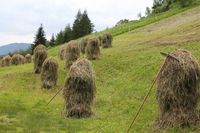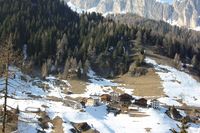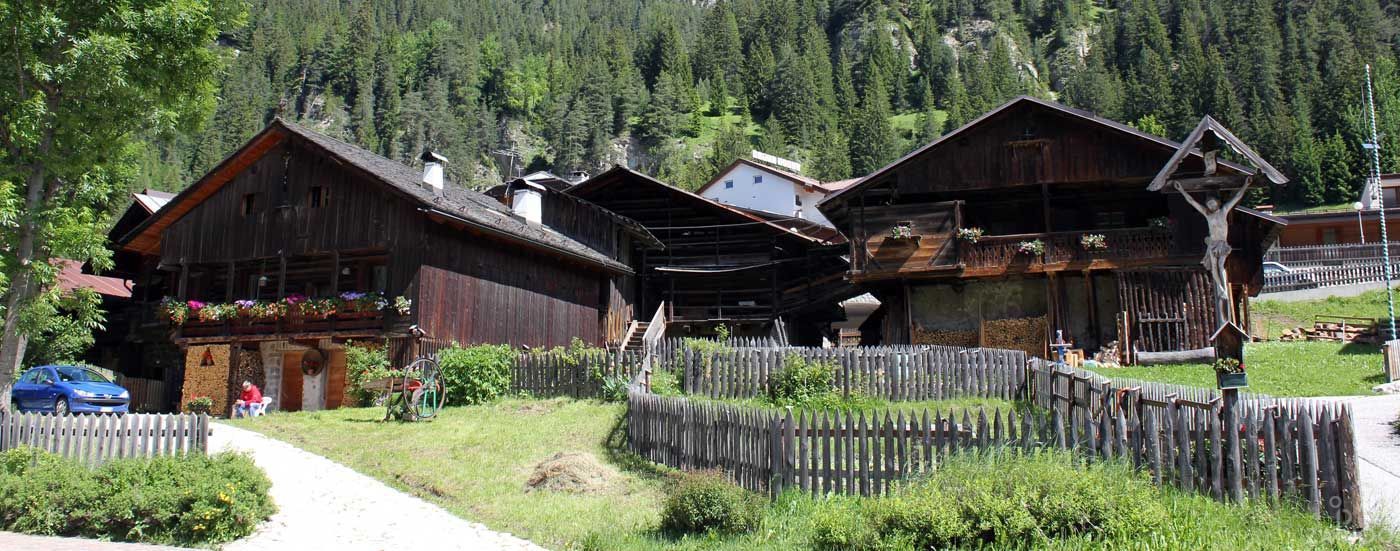Characteristics of the Dolomites region
Habitat of the Ladins
The Dolomites extend over three provinces in northern Italy: South Tyrol, Trentino and Belluno in Veneto. Regardless of the provincial boundaries it is mainly the Ladin-speaking areas in the Dolomites that give the whole region a very special touch. Although German and Italian are also spoken in the Dolomites, the Ladin have preserved much of the originality of the region. This includes the typical Viles, secluded courtyard-farms, which are grouped into small hamlets, and excellent cuisine, which in effect brings together three large culinary traditions: the Italian, the Austrian and the historic Habsburg cuisine. A very interesting cultural region indeed.
The Ladins in the Dolomites
Together with Eastern Swiss and Friulian Romansh, Ladin forms its own language group. The Ladins in the Dolomites are mainly grouped in five valleys around the huge Sella mountain range: in the Val Gardena, the Val Badia, the Fassa Valley, in Buchenstein and in the Ampezzo Valley. Here they represent the majority of the population. But while Ladin was a widely accepted language group in the Habsburg Empire and in modern-day South Tyrol, the Italians are opposed to the autonomy of the Ladin language. A referendum in 2007 gained an overwhelming majority among the Ladin in the Fassa Valley, in Ampezzo and in Buchenstein in favour of joining German-speaking South Tyrol – Rome is now clearly under pressure but to this day there has been no resolution.
Ladin culture and tradition in the area
Apart from the linguistic differences and conflicts, a common culture and common traditions connect the Ladin mainly with the Germans in South Tyrol and the Tyrolese province of Trento. Clothing, construction and food are similar because of a long common history and very similar life styles. Tyrolean hats, typical Tyrolean double farm houses, bacon, dumplings, gnocchi and Tyrolean gun clubs can be found in the entire area of the Dolomites and even beyond its borders. The cuisine, in particular, combines three different culinary traditions in a special way: typical Tyrolean cuisine with the traditions of old imperial Viennese cuisine and Italian Mediterranean cuisine. Although the cuisine of the Dolomites is traditionally considered to be relatively simple, one can also find dumpling dishes, bacon, dumplings, noodles and corn dishes within the region – a combination perfect for sampling in the upper-class restaurants of South Tyrol.
The Viles in the Ladin valleys
From the entire Tyrolean region, we know the typical Tyrolean double farm houses, called Viles in the Ladin language, which consist of two buildings, one residential and one farm building, which are used for living and business by a farmer family. But unlike the German Tyrolese, the double farm houses of the Ladin were not situated individually, but grouped together in small hamlets with up to ten couple farms. In the Val Badia Valley, this is still the characteristic form of settlement. Why the Ladin settled like this has still not been explained. The Viles of the Ladin people, however, are unique and have special characteristics that can only be found here: closely built houses with a well and oven in the middle. The foundations of the houses are made of stone, while a large wooden frame hangs over the stone structure underneath. Frescoes of the Virgin Mary can frequently be seen on the outside walls, while the wood surfaces are usually decorated with beautiful carvings.
In any case, it is worth keeping an eye out for the Viles in the Ladin valleys and to visit one or two of them. Besides looking at these historic buildings you might also experience the typical Ladin lifestyle.





Tweet